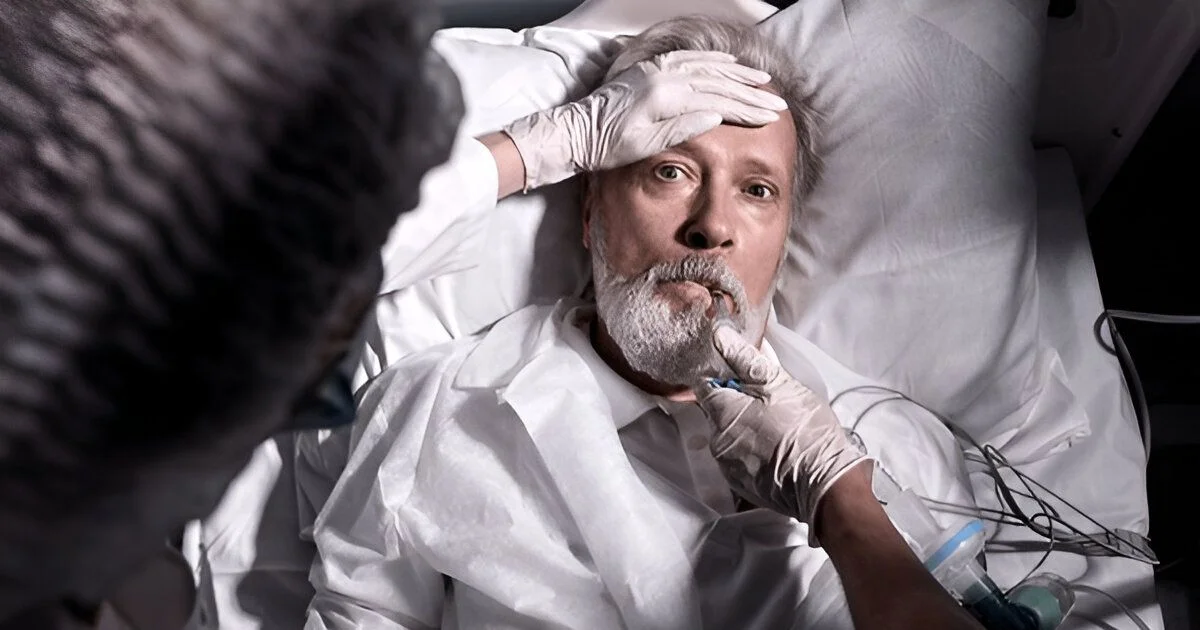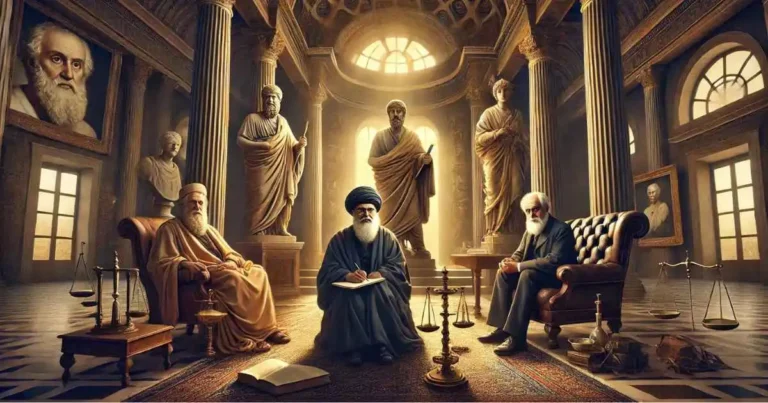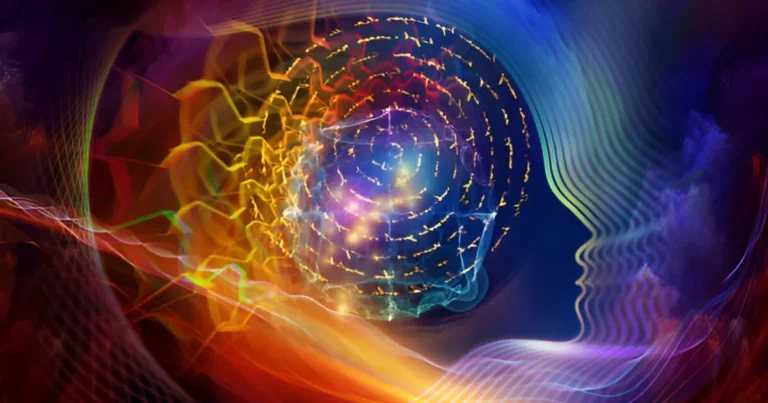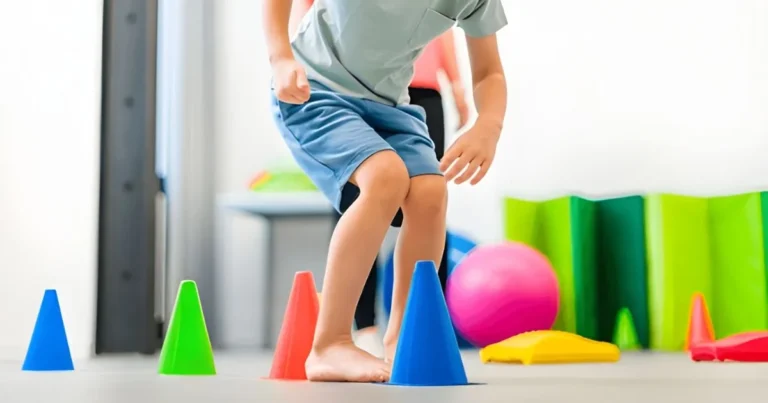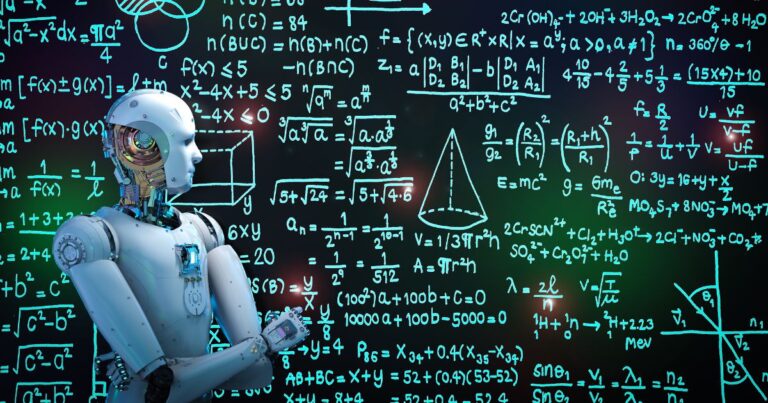Inside the silent world of coma
In the paradoxical landscape of human life, where the extraordinary brushes against the mundane, some of us become witnesses to accidents that do not kill, but instead imprison. Julie Bourges lay motionless, trapped in a body that refused to respond. Around her, doctors whispered, loved ones wept. Behind this mask of stillness, her mind remained alert. She heard every word, felt every touch, an invisible witness to a drama in which she played the leading role. Her story, like those of Martine Rondeaux and Joseph Garcia, challenges our understanding of life, death, and consciousness. What if a coma is not an empty void, but a gateway to an uncharted inner world?
This article explores the hidden dimensions of the comatose state, through personal accounts of those who have lived through this strange and painful experience, supported by the latest insights from neuroscience.
The mind awake behind closed eyes
Before diving into the notion of cognitive-motor dissociation, it’s worth recalling the clinical definition of coma: a prolonged state of unconsciousness caused by a widespread disruption of brain activity.
According to the French National Authority for Health (HAS, 2021), there are three possible outcomes:
- Death, due to irreversible brain damage such as extended anoxia or brainstem destruction.
- Rapid recovery, with a full return of consciousness within 2 to 14 days, in roughly 15% of cases.
- Progression to a chronic state, either a vegetative state (≈40%) or a minimally conscious state (≈30%) after three weeks.
In a vegetative state, patients open their eyes spontaneously, indicating reflexive wakefulness, but show no voluntary responses. Basic reflexes like withdrawal from pain are preserved. In contrast, the minimally conscious state is marked by fluctuating awareness: occasional visual tracking or emotional reactions may appear, although consistent functional communication is absent. Still, around 15% of these patients exhibit purposeful, non-reflexive movements.
As Professor Steven Laureys succinctly puts it: “Coma is a prison without bars.” In 2021, his team identified signs of cognitive-motor dissociation (CMD) in 22% of comatose patients. These individuals activated their primary auditory cortex and middle frontal gyrus in response to questions, while their motor cortex remained silent.
This reveals a striking possibility: a brain awake in silence, its presence detectable only through the words of survivors.
“Long, endless dreams where I felt and lived everything… the kind of delirium that, once I woke up, made it hard to separate dream from reality,” said Julie Bourges, who emerged from an induced coma after three months.
Martine Rondeaux, mistakenly diagnosed as vegetative for eight years, recalled: “I counted the tiles on the ceiling. When the nurse said, ‘She feels nothing,’ I wanted to scream.”
One study found that patients with CMD showed cortisol levels, indicative of stress, up to 40% higher than those in a non-conscious state, highlighting the intense inner suffering that can remain hidden from view.
The reawakening brain: from stillness to synaptic symphony
Despite the body’s apparent stillness, the comatose brain retains an astonishing ability to reorganize itself. Dormant corticothalamic networks can be revived through targeted stimulation.
In 2007, Schiff et al. published a groundbreaking study in Nature, demonstrating that deep brain stimulation of the thalamus (CT-DBS) led to measurable improvements in voluntary movement in a patient with chronic minimal consciousness. This showed that even long-inhibited circuits can be reactivated years after initial trauma.
More recently, Young et al. described “covert consciousness”, a phenomenon where nearly 30% of patients lacking behavioral responsiveness exhibit conscious brain activity, as detected through fMRI or EEG scans. This suggests a dissociation between cognitive intent and motor capacity.
Clinical trials using high-frequency repetitive transcranial magnetic stimulation (rTMS) over the primary motor cortex reported a significant improvement, an average gain of 1.89 points, in CRS-R scores across more than 200 patients, highlighting the promise of neuromodulation in reawakening consciousness.
On a molecular level, post-coma neuroplasticity hinges on the upregulation of BDNF (Brain-Derived Neurotrophic Factor), a critical protein for synaptic growth and neuronal survival. Specialized reviews confirm that modulating BDNF levels fosters new neural connections and accelerates functional recovery after brain injury.
Julie Bourges brings a deeply human perspective to these scientific breakthroughs:
“After my rTMS sessions, I felt a current run through my head. Then, one morning, my little finger moved.”
Her story underscores the delicate intersection between technological intervention and inner revival, a moment where the faint twitch of a finger symbolizes the reawakening of a mind long confined.
Echoes of awareness: what the brain tells us in silence
Advances in neuroscience are gradually pulling back the veil on the human brain’s complexity, even in the depths of silence. Functional MRI has allowed researchers to map this unseen terrain. Connectivity between the medial prefrontal cortex and the posterior parietal cortex, two key regions, emerges as a predictive marker of conscious awareness. This “neural symphony,” orchestrated through alpha and gamma oscillations, appears to pulse in time with a lingering presence of consciousness, suspended between dream and reality.
At the end of life, some brains surge with one last wave of activity. Bursts of gamma waves, linked to memory and cognitive integration, have been recorded in patients undergoing cardiac arrest or intensive care. These neural flares resemble the accounts of those who report seeing bright lights or re-experiencing memories. A 2023 PNAS study (Borjigin et al.) captured these fireworks, suggesting that even a failing brain may retain the astonishing capacity to ignite.
Near-death experiences (NDEs) tend to share common brain signatures: activation of the temporal lobe, connected to emotional memory, disinhibition of the visual cortex (a possible source of glowing lights or dreamlike landscapes), and heightened activity in the default mode network, the system that awakens when the mind begins to wander.
Although studies like those of Vanhaudenhuyse et al. (2023, Frontiers in Neuroscience) approach these phenomena with scientific rigor, they acknowledge that many questions remain unanswered. In this domain, neurochemistry and subjective experience are tightly interwoven.
More unconventional reports, visions of deceased loved ones or vivid scenes beyond clinical scope, continue to puzzle and fascinate. Neuroscience and psychiatry approach these with careful curiosity, steering clear of speculation. After all, the brain, even on the brink, is neither oracle nor machine, it remains the final storyteller of a deeply personal narrative, where biology and lived experience move in mysterious synchrony.
Not just science: the healing power of presence
There was a time when coma was considered a black box, an unknowable abyss that left doctors and families alike wondering: “Do they hear? Do they feel?” Today, neuroscience offers cautious but growing clarity. Recent findings suggest that residual consciousness may persist in some patients once thought entirely unresponsive, paving the way for new therapeutic strategies aimed at neural reawakening.
A meta-analysis by Kondziella et al. (2020), published in Brain, found that between 17% and 35% of patients with no behavioral signs of awareness showed evidence of conscious brain activity, detected via EEG or fMRI. This strongly suggests that consciousness may endure even in the absence of physical response.
However, this potential resurgence is not confined to the lab. It demands a medicine imbued with humanity, where the presence of loved ones plays an active therapeutic role.
The continuous presence of family members deserves to be formally integrated into hospital care protocols, with dedicated visiting spaces and times. As Julie Bourges put it:
“It wasn’t just emotional comfort. Hearing my sister talk about our childhood was a lifeline. Without that, I wouldn’t have made it.”
Joseph Garcia added: “When my wife massaged my hand, I felt every touch as if it said ‘yes’ to life.”
Professor Steven Laureys offers a powerful summary: “Coma is not an ending, but a transformation. And loved ones are the catalysts.”
This fusion of science and humanity may mark the dawn of a new era, one in which we don’t merely treat the body, but also the inner story it holds. A story the brain, even at the edge of the abyss, may still be writing with silent insistence: Those we believe to be absent… are still listening.
References
Kerr, C. (2020). Death Is But a Dream. Penguin Books.
Kletzel, S. L., Aaronson, A. L., Guernon, A., Carbone, C., Chaudhry, N., Walsh, E., Conneely, M., Patil, V., Roth, E., Steiner, M., Pacheco, M., Rosenow, J., & Bender Pape, T. L. (2020). Safety Considerations for the Use of Transcranial Magnetic Stimulation as Treatment for Coma Recovery in People With Severe Traumatic Brain Injury. The Journal of head trauma rehabilitation, 35(6), 430–438.
Kondziella, D. (2020). The neurology of death and the dying brain: A pictorial essay. Frontiers in Neurology, 11, 736.
Parnia, S., Spearpoint, K., de Vos, G., Fenwick, P., Goldberg, D., Yang, J., Zhu, J., Baker, K., Killingback, H., McLean, P., Wood, M., Zafari, A. M., Dickert, N., Beisteiner, R., Sterz, F., Berger, M., Warlow, C., Bullock, S., Lovett, S., McPara, R. M., … Schoenfeld, E. R. (2014). AWARE-AWAreness during REsuscitation-a prospective study. Resuscitation, 85(12), 1799–1805.
Schiff, N., Giacino, J., Kalmar, K. et al. Behavioural improvements with thalamic stimulation after severe traumatic brain injury. Nature 448, 600–603 (2007).
Xu, G., Mihaylova, T., Li, D., Tian, F., Farrehi, P. M., Parent, J. M., Mashour, G. A., Wang, M. M., & Borjigin, J. (2023). Surge of neurophysiological coupling and connectivity of gamma oscillations in the dying human brain. Proceedings of the National Academy of Sciences of the United States of America, 120(19), e2216268120.
Young, M. J., Edlow, B. L., & Bodien, Y. G. (2024). Covert consciousness. NeuroRehabilitation, 54(1), 23–42.

Ahmed El Bounjaimi
Copywriter-Content Designer
Master’s in Organizational Communication, Hassan II University
Bachelor’s in Philosophy of Communication and Public Spheres, Hassan II University

